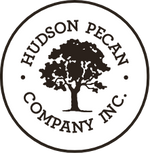The History of Pecans, A Pecan Timeline and Fun Facts
Pecans Were Popular From the Start
The history of pecans can be traced back to the 16th century. The only major tree nut that grows naturally in North America, the pecan is considered one of the most valuable North American nut species. The name “pecan” is a Native American word of Algonquin origin that was used to describe “all nuts requiring a stone to crack.”
Originating in central and eastern North America and the river valleys of Mexico, pecans were widely used by pre-colonial residents. Pecans were favored because they were accessible to waterways, easier to shell than other North American nut species and of course, for their great taste.
Because wild pecans were readily available, many Native American tribes in the U.S. and Mexico used the wild pecan as a major food source during autumn. It is speculated that pecans were used to produce a fermented intoxicating drink called “Powcohicora” (where the word “hickory” comes from). It also is said that Native Americans first cultivated the pecan tree.
Presidents Washington and Jefferson Loved Pecans, Too!
One of the first known cultivated pecan tree plantings, by Spanish colonists and Franciscans in northern Mexico, appears to have taken place in the late 1600’s or early 1700’s. These plantings are documented to around 1711—about 60 years before the first recorded planting by U.S. colonists.
The first U.S. pecan planting took place in Long Island, NY in 1772. By the late 1700’s, pecans from the northern range reached the English portion of the Atlantic Seaboard and were planted in the gardens of easterners such as George Washington (1775) and Thomas Jefferson (1779). Settlers were also planting pecans in community gardens along the Gulf Coast at this time.
In the late 1770’s, the economic potential of pecans was realized by French and Spanish colonists settling along the Gulf of Mexico. By 1802, the French were exporting pecans to the West Indies—although it is speculated that pecans were exported to the West Indies and Spain earlier by Spanish colonists in northern Mexico. By 1805, advertisements in London said that the pecan was “…a tree meriting attention as a cultivated crop.”
The Birth of an Industry
New Orleans, located near the mouth of the Mississippi River, became very important to the marketing of pecans. The city had a natural market as well as an avenue for redistributing pecans to other parts of the U.S. and the world. The New Orleans market gained local interest in planting orchards, which stimulated the adaptation of vegetative propagation techniques and led to the demand for trees that produce superior nuts.
During the 1700’s and the early 1800’s, the pecan became an item of commerce for the American colonists and the pecan industry was born. (In San Antonio, the wild pecan harvest was more valuable than popular row crops like cotton!)
Pecan groves (trees established by natural forces) and orchards (trees planted by man) consisted of diverse nuts with various sizes, shapes, shell characteristics, flavor, fruiting ages and ripening dates. In the midst of this variability, there was the occasional discovery of a wild tree with unusually large, thin-shelled nuts, which were in high demand by customers.
In 1822, Abner Landrum of South Carolina discovered a pecan budding technique, which provided a way to graft plants derived from superior wild selections (or, in other words, to unite with a growing plant by placing in close contact). However, this invention was lost or overlooked until 1876 when an African-American slave gardener from Louisiana (named Antoine) successfully propagated pecans by grafting a superior wild pecan to seedling pecan stocks. Antoine’s clone was named “Centennial” because it won the Best Pecan Exhibited award at the Philadelphia Centennial Exposition in 1876. His 1876 planting, which eventually became 126 Centennial trees, was the first official planting of improved pecans.
The successful use of grafting techniques led to grafted orchards of superior genotypes and proved to be a milestone for the pecan industry. The adoption of these techniques was slow and had little commercial impact—until the 1880’s when Louisiana and Texas nurserymen learned of pecan grafting and began propagation on a commercial level.
Thus was the start of a booming pecan growing and shelling industry!
A PECAN TIMELINE
1500’s- Native Americans utilized and cultivated wild pecans
- Spanish colonists cultivated orchards (late 1600’s – early 1700’s)
- English settlers planted pecan trees (1700’s)
- George Washington planted pecan trees (1775)
- Thomas Jefferson planted pecan trees (1779)
- Economic potential for pecans realized (late 1700’s)
- Pecans exported by French to the West Indies (1802)
- Pecan budding technique discovered (1822)
- Successful grafting of the pecan tree (1846)
- First planting of improved pecans (1876)
- Commercial propagation of pecans begins (1880’s)
